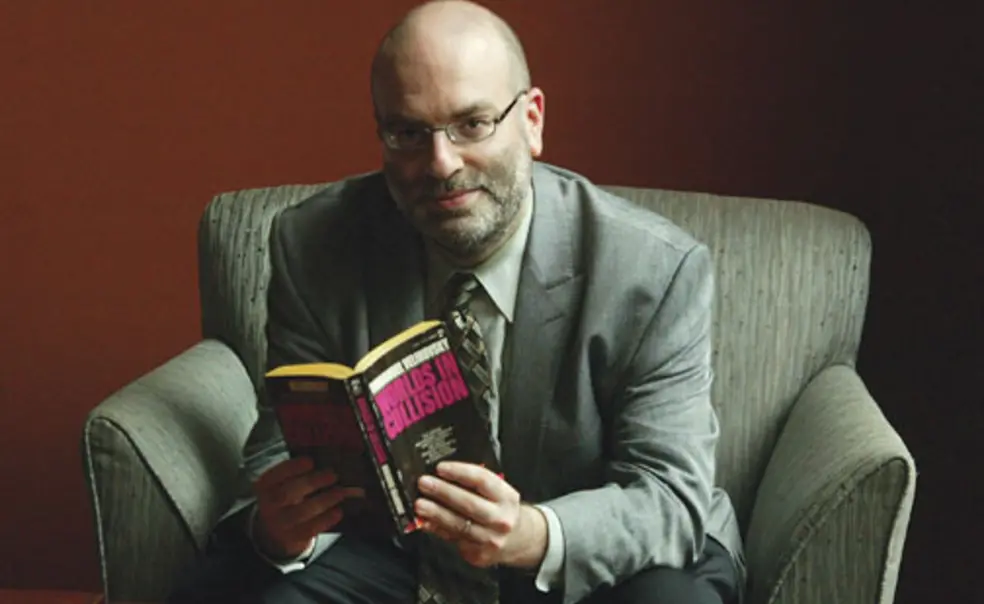IDEAS: The day Venus hit the Earth
From “vaccines cause autism” to “the Mayan calendar says the world will end in 2012,” the Internet has opened the floodgates of pseudoscience. But the junk-science problem is nothing new, history professor Michael Gordin shows in his book, The Pseudoscience Wars: Immanuel Velikovsky and the Birth of the Modern Fringe (University of Chicago Press) — and there is little anyone can do about it.
Gordin offers a vivid case study of a once-popular book, Worlds In Collision — mostly forgotten today, but endlessly discussed from its publication in 1950 through the countercultural movement of the 1970s, in which its author, Velikovsky, was held up as a persecuted genius fearlessly battling the science establishment.
The premise of Worlds In Collision appears farfetched: Around 1500 B.C., a massive comet grazed the Earth — nearly wiping out its inhabitants — before settling into orbit around the sun as a new planet, Venus. Many ancient cultures made record of this traumatic event in their mythologies, Velikovsky argued, including the authors of the Exodus story in the Bible.
Velikovsky’s improbable theories (not limited to Venus — other planets go similarly awry) took on a life of their own, thanks to publishers’ marketing campaigns, devoted followers, and the author himself.
A Russian-born psychoanalyst, Velikovsky came to America in 1939 and lived in Princeton from 1952 until his death in 1979. In 2005, Velikovsky’s daughter donated 156 boxes of his papers to Firestone Library. “Velikovsky sincerely thought he had revolutionized knowledge and future scientists would want his material,” says Gordin.
Gordin shows how Velikovsky’s ideas gained broad attention and a paradoxical appeal in part because legitimate scientists lambasted them so vociferously (he found an especially fierce opponent in Harvard astronomer Harlow Shapley *1913). Then as now, when real scientists loudly criticize junk science, it tends to legitimize the junk.
Nor have scientists had much luck in walling off quack science from legitimate science. A permeable barrier exists between pseudoscience and science, controlled only by what Gordin calls a “bar set by consensus of the scientific community.” Set the bar too low, and junk science comes thundering in, a great nuisance; set it too high, and ingenious discoveries might be ignored. Too lofty a bar, Gordin writes, might have excluded once-controversial breakthroughs like Einstein’s special theory of relativity.
There will always be Velikovskys: intelligent, highly trained eccentrics propounding junk theories in complete sincerity. Ironically, pseudoscience is a measure of the health of science itself, Gordin believes. “Fringe theories proliferate because the status of science is high and is something worthy of imitating. They are a sign of health, not disease.”











1 Response
Kim J. Masters ’68
9 Years AgoChallenging Velikovsky
I was glad to read about Pseudoscience Wars: Immanuel Velikovsky and the Birth of the Modern Fringe by Professor Michael Gordin (Campus Notebook, Oct. 24). As a sophomore in the fall of 1965, I challenged Velikovsky in The Daily Princetonian on his theory that the mythical Oedipus was actually the Pharaoh Akhnaton. As with other theories, he devoted a book to this topic. In reply I got a 2,000-word character assault from him titled “Lesson For a Sophomore,” which filled a page of the paper but failed to refute the evidence. Nonetheless, it reduced me to feeling that I was an unworthy ignoramus who had unjustly attacked an untouchable academic dignitary.
Fortunately, both Professor John Marks of the Oriental studies department and Professor John Wilson ’20, a distinguished Egyptologist then at the Oriental Institute of the University of Chicago, came to my rescue. They wrote letters to the Princetonian indicating that the evidence supported my contention. It is heartening to see that 47 years later, Velikovsky continues to be called on his pretensions and distortions by Princeton faculty.